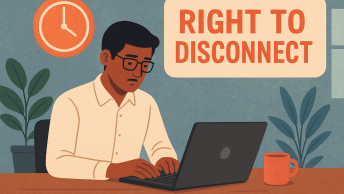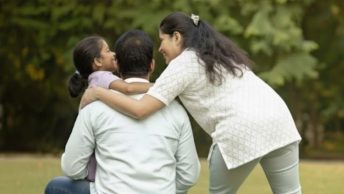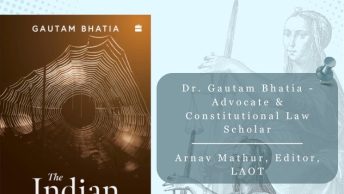Blurb: The article advocates extending euthanasia to non-terminally ill patients, emphasizing autonomy and dignity under Article 21. Critiquing current laws, it highlights ethical dilemmas and proposes a regulated framework inspired by global practices to alleviate unbearable suffering while ensuring safeguards against misuse, prioritizing compassion and personal choice in end-of-life decisions.
Recently, the Karnataka Govt. recognized the right to die with dignity of individuals and laid down the policy allowing passive euthanasia. This was the outcome of the landmark decision of the Supreme Court in Common cause of India v. Union Of India first discussed euthanasia in detail in the Indian jurisprudence. It held that the right to die with dignity is enshrined under Article 21 of the Constitution, and hence passive euthanasia must be allowed in certain circumstances.
Earlier in September 2024, the Union Ministry of Health issued its guidelines for withdrawal of life support in terminally ill patients. The guidelines define terminal illness as an irreversible or incurable ailment that will result in death in the foreseeable future. Severe traumatic brain damage that does not improve after 72 hours or more is also covered. Therefore, the current legal landscape recognizes the right to die for patients undergoing everyday painstaking practices such as feeding from tubes.
However, the inadequacy of the current framework is highlighted through cases such as that of Harish Rana v. Union of India. In this case, the Supreme Court recognized that the petitioner was living with 100% disability, permanent vegetative state and complete dependence on ageing parents. However, the prayer for allowing euthanasia was rejected since the petitioner was not dependent on life support. In this background, this article argues that the right to euthanasia be extended to non-terminally ill patients. It suggests that active euthanasia does not infringe upon Article 21 and proposes a framework for regulating the same.
Ethical and Legal Dilemmas
Before we proceed, we must distinguish between active euthanasia and passive euthanasia. Active euthanasia means to assist an individual’s death by an overt act such as injecting a lethal dose. Passive euthanasia refers to assist in the death of the terminally ill patients by withdrawing their medical support without any overt act. Passive euthanasia is legal in India whereas active euthanasia is unlawful as held in Aruna Ramchandra Shanbaug v. Union of India.
In the Gian Kaur case, the Supreme Court acknowledged the right to die with dignity, particularly when life is nearing the end. Notably, the Supreme Court has held that the “right to die with dignity” should not be confused with “right to die”. Hence, it held that suicide cannot come under Article 21 if it is curbing the natural life span of the individual.
The restriction on active euthanasia stems from the moral judgment that considers suicide or the need to die as a nihilistic practice. The most prominent argument against legalizing active euthanasia is the “slippery slope” argument which refers to assisted suicides becoming a social phenomenon leading to unintended consequences which can be range from forced euthanasia to eugenics.
However, Kant’s idea of dignity is instructive here. He argued that humans by default should be considered as prudent individuals not as a means to uphold societal values or hypothetical scenarios. Allowing euthanasia to non-terminally ill patients under a regulatory approach aligns with Kant’s imperative to respect individuals as moral agents capable of defining their own lives and deaths. Moreover, statistics from nations with liberal euthanasia laws demonstrate no widespread misuse or mass practice of euthanasia.
Ronald Dworkin’s book, ‘Life’s Dominion’ emphasises the need of ending life in an appropriate manner, keeping aligned with the way we desire to have lived, and acknowledging that death is both the beginning and the end of everything. Dworkin advocates for recognizing advanced directives, emphasising the importance of individuals making their own dying choice.
One must question whether euthanasia infringes the principle of sanctity of life that provides implicit protection of human life. It can be argued that sanctity does not only extend to life but as well to death. In the case of Osman v. United Kingdom it was held that valuing a person’s death is valuing their life and giving it sanctity. The belief that life must be maintained at all costs does not sanctify life. Alleviating an individual from excruciating suffering demonstrates profound respect for the sanctity of life and its end by providing the right to die with dignity as conferred under Article 21.
The way forward; Euthanasia for non-terminally ill patients
To establish a legal framework that allows active euthanasia in some instances, the government can look to other European legislations for a comparative understanding. Drawing parallels must however be informed by the differences in cultural values and socioeconomic realities, and a blind transplantation would not succeed. For instance, European laws are shaped by non-religious values, and they prioritise individual autonomy, ensuring decisions are voluntary and free from external pressures. On the other hand, India’s religions views life as sacred which creates resistance to euthanasia. Economically, India faces challenges like poverty and inadequate healthcare, increasing risks of coercion and misuse, such as financial exploitation can lead to malpractice of involuntary euthanasia. Keeping these factors in account, we must move towards recognizing active euthanasia as a part of right to dignity.
The value that all lives must be preserved in the absolute sense becomes a paradox in cases where individuals demand control to retain dignity through euthanasia. Extending agony of an individual further conflicts with their privacy as human life is not just the biological perseverance but it encompasses meaning, autonomy and in the Nietzschean idea, the power to choose.
Similar laws exist in the Netherlands and Belgium where euthanasia is defined as a third-party act that intentionally ends a person’s life at their request. In both countries, only doctors can perform euthanasia. Both laws recognize euthanasia as an important medical practice. The goal is to open up these clinics, apply consistent standards for assessing new cases of doctor-assisted suicide, and ensure the highest level of care is provided. The ability to decline a request for euthanasia ensures a doctor’s freedom of conscience in both countries.
Conclusion
The Harish Rana case highlights the flaws in the current legal framework in which individuals experiencing irreparable and intolerable anguish are denied the right to terminate their pain by legal methods.
To make euthanasia accessible to non-terminally ill people, India must take a cautious but compassionate approach, learning from international examples while protecting against abuse. Establishing a framework that considers issues such as voluntary permission, incurability, and medical supervision will help guarantee that euthanasia is a humane option rather than a forced outcome. Individuals’ autonomy over their bodies and lives is essential in a society that values dignity and freedom as conferred under Article 21.
The principle of sanctity of life enshrines not only the preservation of life, but also the respect for its quality and its end. Being free from unbearable pain through euthanasia demonstrates a deep regard for personal autonomy and dignity. It is time for India to reconsider its euthanasia legislation and address the issue of individuals who live lives devoid of dignity, freedom, and hope.
Vishwaroop Chatterjee is an undergraduate law student at RGNUL, Punjab. His academic interests include Technology Law and Constitutional Law.
Ed Note: This article was edited by Hamza Khan and published by XXX from the Student Editorial Team.







vnh8hl
Very well argued. Its relevance extends to the pending case of criminalization of Santhara, a Jain practice of fasting till death.
m6wore
LPXOVlqI0I1